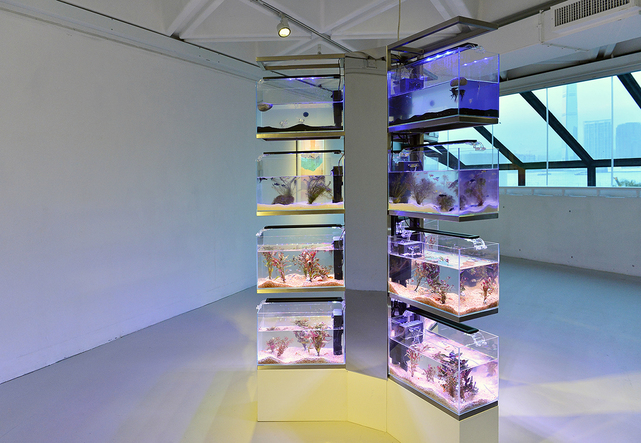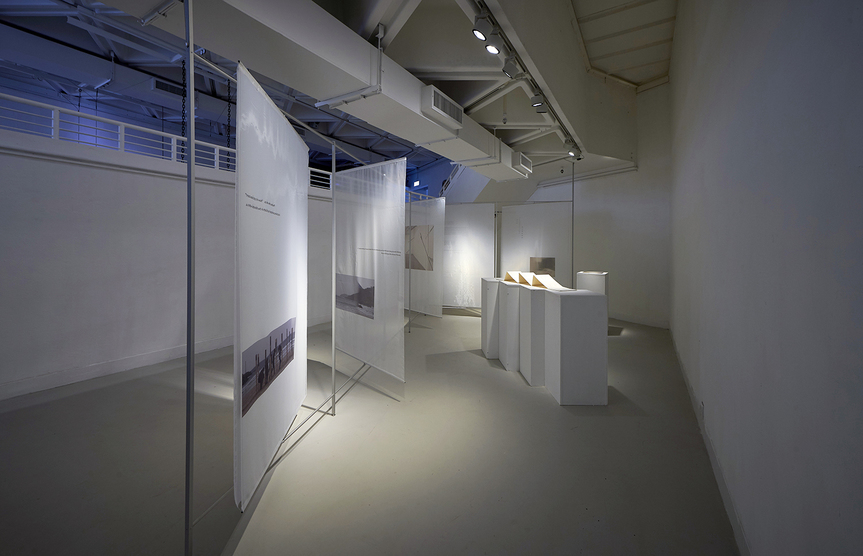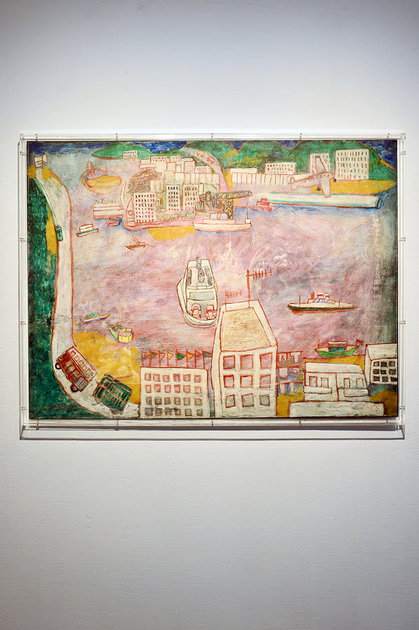-
From Current Issue
-
- Editor’s Letter Fire in the Heart
- Reviews I Gusti Ayu Kadek Murniasih
- Reviews 11th Seoul Mediacity Biennale: “One Escape at a Time”
- Dispatch Networked China
- One on One Monira Al Qadiri on Yukio Mishima
- Essays The rise of independent art spaces in pandemic-era Shanghai
- Features Tuan Andrew Nguyen
- Table of Contents
- Web Exclusives
- Archive
- Subscribe

R
E
V N
E
X
T
Installation view of “Wanchai Grammatica: Past, Present, Future Tense” at the Hong Kong Arts Centre, 2018. All images courtesy the artists and Hong Kong Arts Centre.
“Wan Chai Grammatica: Past, Present, Future Tense” was the eighth flagship exhibition presented by the Hong Kong Arts Centre (HKAC) and the first to take place in the organization’s newly renovated space. Celebrating 40 years since HKAC’s establishment, the exhibition focused on the uniqueness of its home, Wan Chai, and showcased mostly newly commissioned pieces by 18 diverse and talented artists. Although from different countries, backgrounds and generations, the artists are all tied together by one common thread: their bond with Hong Kong, or more specifically, topophilia—the love of place—in this case, of Wan Chai. Curated by the HKAC curatorial team with Valerie C. Doran (herself a Hong Kong resident for over 30 years), the show invited viewers to celebrate the area’s rich heritage, to embrace its eclecticism, and to contemplate its evolution—all the while provoking subjective associations with the neighborhood’s history. Regardless of the artists’ media, Wan Chai’s cultural identity was powerfully felt throughout the entire show.
Viewers were greeted by MAP Office’s Wanchai Island (2018), an installation of 12 fish tanks, arranged in three towers. The work depicts an imagined future where Wan Chai’s shoreline has disappeared and the city is submerged underwater. A series of four dioramas housed in vitrines, Wanchai Colonies (2018), followed. Using oyster shells, coral, fake pearls, and figurines, the duo portrays fantastical urban landscapes.
Other mixed media installations included works by Trevor Yeung, Jaffa Lam, Choi Yan Chi, Ho Sin Tung, and NS Harsha. Choi’s Beyond and 1985 (both 2018) might strike a chord with those familiar with the veteran artist’s work, as they echo her boundary-breaking exhibition from 1985 (also presented at HKAC), which paved the way for installation art in Hong Kong. With sheets of sheer gauze superimposed with images and poetry, Choi continues to challenge viewers to consider the concepts of space and movement in art. Ho’s site-specific installation One Thousand and One Moons (2018) offered a poignant lens on the history of Wan Chai through the mission of the orphanage of St. Paul de Chartres. Shown in a room with Ho’s hand-drawn prints and other intimate objects were 1,001 coins scattered on the floor—a silver dollar for every girl saved by Catholic nuns from a life of destitution. Harsha’s installation Leftovers (2008/2018), of plastic casts imitating a traditional South Indian repast, draws attention to Wan Chai’s migrant communities.
Installation view of PHOEBE HUI’s Process with Body, Water and Pendulums, 2009–11/2016/2018, dimensions variable, at “Wan Chai Grammatica: Past, Present, Future Tense,” Hong Kong Arts Centre, 2018.
Other artists such as South Ho Siu Nam, Mark Chung, Frank Tang Kai Yiu, Leung Mee Ping, Cédric Maridet and Xyza Cruz Bacani presented photography, video and sound installations. Phoebe Hui’s interactive installation Process with Body, Water and Pendulums (2009–11/2016/2018) solicits active participation from the audience in the form of swinging, in order to activate a recently rediscovered 40-year-old vinyl record of the celebratory musical performances staged at the HKAC’s opening in 1977.
Gaylord Chan’s Harbour (1969) was aptly featured. The painting is a simplified but distinctly recognizable depiction of the Wan Chai harbor from Chan’s old home; this was complemented by Carnival (2018), a digital print specially created to celebrate HKAC’s 40th birthday. Three works by the late Luis Chan were also on view, presenting whimsical and fantastical portrayals of the local cityscape and its residents.
“Have a Rest” (2008– ), a series of paintings by Yeung Tong Lung, were placed in discrete but connected groupings. They not only provide a window to the greenery of the outside parks, but also offer a voyeuristic view into the daily lives of Wan Chai residents going about their business. The latter is echoed in the sketches and works in ink by Firenze Lai and Chu Hing Wah, who seek to unveil the personal emotions of the figures they depict.
The exhibition was an ode to Wan Chai, and one that firmly asserted its unique cultural identity. It not only prompted viewers to take a closer look at their own personal relationships with this long under-appreciated area, but even seemed to suggest new affections. Most importantly, it was a powerful affirmation of the HKAC’s dedication toward embracing all the quirks and kinks of this eclectic neighborhood that balances the old with the new, and the traditional with the modern.
“Wanchai Grammatica: Past, Present, Future Tense” is on view at the Hong Kong Arts Centre, until November 4, 2018.
To read more of ArtAsiaPacific’s articles, visit our Digital Library.
















